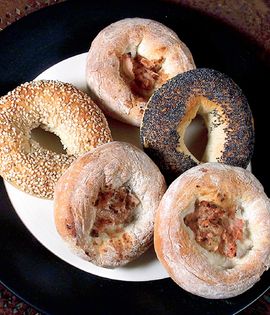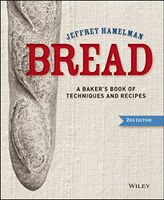Advertisement

Preparation info
- Dough Yield: About
64
bagels at 4 oz each - Difficulty
Medium
Appears in
Published 2004
Good Bagels are One of the Tastiest Baked Treats you could ask for. Repeat: good bagels. And while most people don’t often have access to really well-made bagels, when we have them, we tend to remember both the bagels and where we got them. Like most baked goods, bagels have a few needs in their production, and they require a little special equipment, but there is nothing out of the ordinary, and nothing that is cost prohibitive.
Most all the bagels sold today are extruded, t


